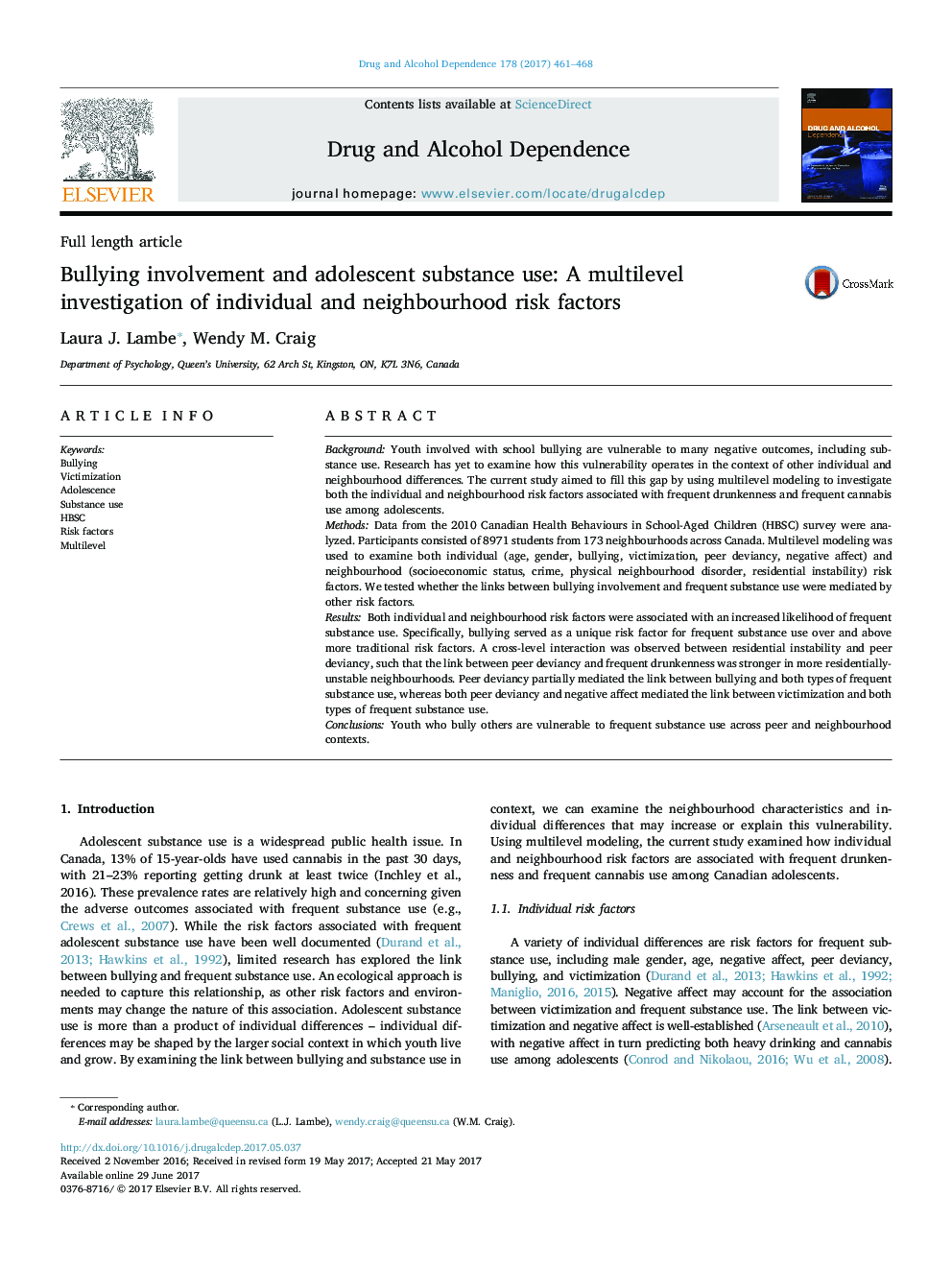| کد مقاله | کد نشریه | سال انتشار | مقاله انگلیسی | نسخه تمام متن |
|---|---|---|---|---|
| 5120375 | 1486113 | 2017 | 8 صفحه PDF | دانلود رایگان |
- Bullying was a unique risk factor for frequent substance use.
- Victimization was an indirect risk factor for frequent substance use.
- Peer deviancy was a stronger risk factor in more residentially-unstable areas.
BackgroundYouth involved with school bullying are vulnerable to many negative outcomes, including substance use. Research has yet to examine how this vulnerability operates in the context of other individual and neighbourhood differences. The current study aimed to fill this gap by using multilevel modeling to investigate both the individual and neighbourhood risk factors associated with frequent drunkenness and frequent cannabis use among adolescents.MethodsData from the 2010 Canadian Health Behaviours in School-Aged Children (HBSC) survey were analyzed. Participants consisted of 8971 students from 173 neighbourhoods across Canada. Multilevel modeling was used to examine both individual (age, gender, bullying, victimization, peer deviancy, negative affect) and neighbourhood (socioeconomic status, crime, physical neighbourhood disorder, residential instability) risk factors. We tested whether the links between bullying involvement and frequent substance use were mediated by other risk factors.ResultsBoth individual and neighbourhood risk factors were associated with an increased likelihood of frequent substance use. Specifically, bullying served as a unique risk factor for frequent substance use over and above more traditional risk factors. A cross-level interaction was observed between residential instability and peer deviancy, such that the link between peer deviancy and frequent drunkenness was stronger in more residentially-unstable neighbourhoods. Peer deviancy partially mediated the link between bullying and both types of frequent substance use, whereas both peer deviancy and negative affect mediated the link between victimization and both types of frequent substance use.ConclusionsYouth who bully others are vulnerable to frequent substance use across peer and neighbourhood contexts.
Journal: Drug and Alcohol Dependence - Volume 178, 1 September 2017, Pages 461-468
